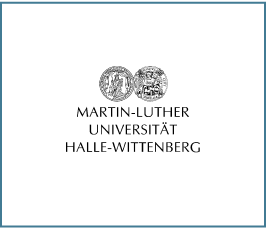Switching dynamics, roughness and conduction: controlling domain wall physics via environmental conditions and defect density in ferroelectric thin films
Colloquium
- Datum: 26.11.2015
- Uhrzeit: 17:15
- Vortragende(r): Prof. Patrycja Paruch
- University of Geneva
- Ort: Leibniz-Institut für Agrarentwicklung in Transformationsökonomien (IAMO), Theodor-Lieser-Straße 2, 06120 Halle (Saale)
- Raum: Hörsaal
- Gastgeber: Martin-Luther-Universität Halle-Wittenberg

Domain walls separate regions with different polarisation orientation
and their physics, well described in the broader framework of pinned
elastic interfaces [1], is key to understanding the switching, shape and
stability of such domains under varying temperature or environmental
conditions. In addition, domain walls can present novel properties,
quite different from those of their parent phase, making them
potentially useful as active components in future nano-devices. Here, we
present our piezoresponse force microscopy studies of ferroelectric
domain walls in epitaxial Pb(Zr0.2Ti0.8)O3 thin films, where domain
roughness and growth was investigated both under the influence of a
biased stationary probe tip and at the edges of macroscopic electrodes.
Our studies show a slowing of domain growth rates and significantly
increased roughening with decreasing relative humidity and with
increasing densities of defects such as oxygen vacancies [2,3]. Bridging
the statistical framework of disordered elastic systems with a
Ginzburg-Landau approach, we numerically probe the relative
contributions of surface adsorbates (which screen dipolar interaction in
the sample) and disorder, in good agreement with the experimental
observations [2]. Using a “pump-probe” approach we also explore the
earliest stages of domain switching, demonstrating an unexpectedly long
term (over 100 ms) metastability of the (sub)critical nucleus formed
under very short repeated bias pulses at the probe tip [3]. We combine
these observations with parallel conductive-tip atomic force microscopy
current measurements, which show highly localised variations in
conductance, and highlight the key role played by oxygen vacancies and
surface adsorbates, whose redistribution allows the reversible
transition between insulating and conducting transport behaviour at the
domain walls [4].
[1] P. Paruch and J. Guyonnet, Comptes rendus de l’académie des sciences -Physique 14, 667 (2013).
[2] J. Guyonnet et al. manuscript submitted.
[3] C. Blaser and P. Paruch, New J. Phys. 17, 013002 (2013).
[4] I. Gaponenko et al., Appl. Phys. Lett. 106, 162902 (2015).